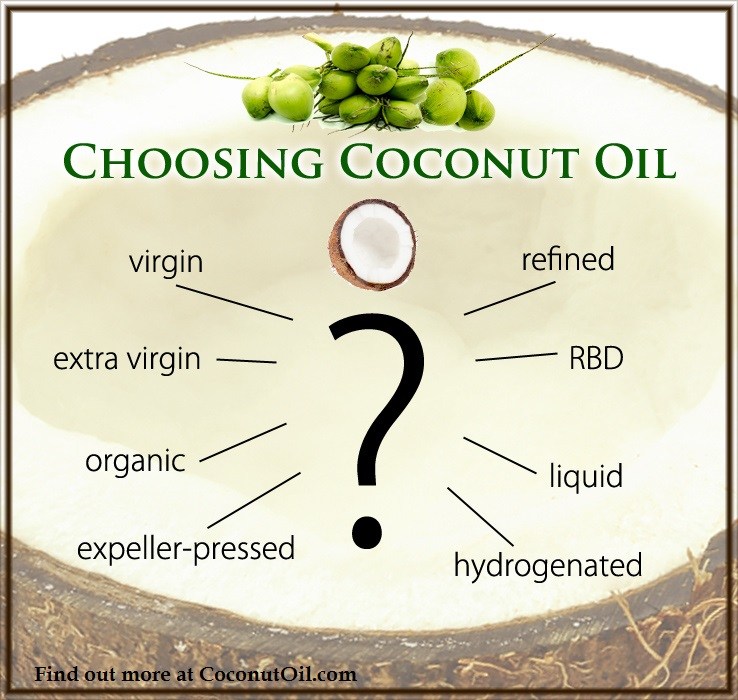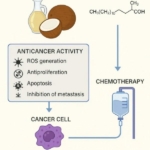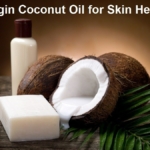
by Paul Fassa
Health Impact News
A 2015 study from the University of Tufts shows that a diet high in coconut oil can control Candida yeast infections. In addition to this study and other previously published studies, there have been many anecdotal reports on curing Candida by including large amounts of coconut oil in the diet. The studies also confirm coconut oil’s efficacy for curbing Candida without side effects from the oil itself, a claim anti-fungal pharmaceuticals cannot make.
Because of rapid yeast die-off, there can be a Herxheimer event, or “healing crisis.” Though uncomfortable, it’s a sign that the Candida killing has begun. It’s not a side effect of coconut oil. But it’s a good idea to start off lightly then increase your coconut oil dosage to three or more tablespoons daily.
The University of Tufts animal study, “Manipulation of Host Diet To Reduce Gastrointestinal Colonization by the Opportunistic Pathogen Candida albicans” was published in the November 2015 issue of the journal mSphere.
Coconut oil fed to mice with Candida albicans occupying their guts reduced the infectious level 90 percent, greatly exceeding the results from beef tallow and soybean oil. (Source)
Study author Kearney Gunsalus, Ph.D. announced the results as being more clinical than preventative.
“The potential use of coconut oil in the short term to control the rate of fungal overgrowth should not be considered a prophylactic approach to preventing fungal infections,” said Gunsalus. “We want to give clinicians a treatment option that might limit the need for antifungal drugs. If we can use coconut oil as a safe, dietary alternative, we could decrease the amount of antifungal drugs used, reserving antifungal drugs for critical situations,” Gunsalus added. (Source)
Of course, most of us don’t want to use pharmaceutical antifungal drugs with their toxic side effects at all. So after this brief overview of what candida overgrowth is, we’ll be looking over the coconut oil dietary approach to reversing Candida or C. albicans.
Explaining Candida Overgrowth
Some people know from experience what Candida is while most have a vague awareness of it at best. A Candida albicans infection begins when single celled yeast appear in a human host’s warm and moist tissues.
There the normally innocent unicellular yeast cells morph into multicellular filament like forms that are more aggressively invasive. Then they form pathogenic colonies that create areas that are hostile to our innate probiotic system.
For a healthy “inner-terrain” strong immune system, good digestion and proper metabolic function that feeds our cells the energy are needed. We need our probiotic good bacteria to balance the pathogenic bacteria at 80 to 85 percent of our gut flora or microbiota.
When the morphed Candida population gets out of balance with probiotic or good bacteria, all sorts of chronic health problems arise. Subsequently lowered immunity encourages increased acute infections like the flu or other short-term infectious diseases.
Chronic health maladies resulting from Candida can include skin disorders: rashes, vaginal yeast infections, jock itch, athlete’s foot, and those ugly toenail fungal eruptions. Then there’s the general malaise of discomfort or nagging minor pains, low energy even after coffee, and sweets often fostering an addiction to them.
Bloating, flatulence, and the inability to lose weight can be Candida symptoms. Thrush can form in the mouth and throat, causing bad breath and excessive white coating of the tongue. Repeated digestive and elimination issues can be signs of Candida albicans or C. albicans colonization in your body.
The imbalance that allows Candida to usurp our friendly bacteria’s micro-environment and overwhelm our good and necessary gut bacteria is more common among people who have used antibiotics, especially if not accompanied or followed by powerful probiotic supplements or fermented foods and beverages.
The all too normal standard American diet (SAD) is enough to throw our gut biome cultures out of balance with all the sugars, preservatives, additives, and refined or simple carbohydrates. Other factors include environmental toxins and chronic anxiety or stress.
Candida yeast colonies are known to sequester pollutants, heavy metals, and even cancers that develop into tumors. Controversial Italian oncologist Dr. Tulio Simoncini even declared that cancer is yeast.
He cured cancer patients by directly spraying yeast colonies with baking soda (bicarbonate of soda) and water through surgically opened areas or catheters to kill the yeast, resulting in cancer remissions.
However, some maintain the Candida yeast is simply an environmental symbiotic support for cancer. Either way, it’s pretty nasty stuff.
Perhaps over 40 million Americans suffer from various Candida ailments that are discomforting precursors to worsening health. Many who are afflicted are not that aware that Candida is the source of their problems.
If it spreads throughout the body it can become debilitating and possibly life threatening candidosis or candidiasis.
Proper Diet With Coconut Oil is a Key to Prevention and Curing
The common route most who avoid toxic anti-fungal pharmaceuticals follow begins with excluding simple refined carbohydrates and sugars and alcohol completely. They are what Candida yeast cells feed on. Shifting from processed foods to organic whole foods is another avenue in this route.
Then trying to regroup one’s army of probiotic helpful bacteria involves recruiting fermented foods and beverages, especially home-made milk or water kefirs. Probiotic supplements can also be useful, depending on the quality.
But many holistic nutritional experts recommend using fermented foods and home-made kefirs as well. They’re usually more potent than store bought kefirs and much less expensive to incorporate daily than probiotic supplements.
Earlier Studies Confirm Coconut Oil Efficacy and Safety on Candida
Adding coconut oil up to 3.5 tablespoons daily adds a Candida yeast destroying element that doesn’t disturb beneficial bacteria.
A study conducted at the University of Minnesota in 2010 showed that a monolaurin based gel, derived from lauric acid, which is 50% of coconut oil’s fatty acids, did not affect friendly bacteria Lactobacillus negatively while significantly reducing Candida and G. vaginalis. (Source)
Holistic practitioners commonly prescribe caprylic acid as the “pesticide” to accompany the Candida diet described earlier. It’s sold as a supplement at almost any health food store. But guess what? Coconut oil’s easily digested medium chain tryglicerides (MCT) contain caprylic acid.
A 2012 Japanese study determined that four fatty acids present in coconut oil were effective in fighting oral candidiasis: caproic acid, caprylic acid, capric acid and lauric acid. (Source)
Prior to that, a 2001 University of Iceland study discovered, … “capric acid … causes the fastest and most effective killing of all three strains of Candida albicans tested … Lauric acid, a 12-carbon saturated fatty acid, was the most active at lower concentrations and after a longer incubation time.” (Source)
A byproduct of using coconut oil to combat Candida is weight loss from fat reduction. Yes, a saturated fat with medium chain triglycerides (MCTs) does that. A study with cats proved that. Fed coconut oil, they lost weight with reduced fat mass while maintaining lean body mass. (Source)
Coconut oil’s MCTs improve metabolism to reduce body fat in addition to destroying yeast formations that lead to Candida albicus overgrowth without side effects.
Sources:
Tufts University study abstract
Coconut oil candida studies and anecdotal reports compilation
Coconut oil fat loss study with cats
Save





 Research Continues to Show Virgin Coconut Oil's Effectiveness in Treating Cancer
Research Continues to Show Virgin Coconut Oil's Effectiveness in Treating Cancer Coconut Oil Continues to Benefit Alzheimer's Patients over Drugs as Studies Continue for Neurological Benefits
Coconut Oil Continues to Benefit Alzheimer's Patients over Drugs as Studies Continue for Neurological Benefits How the Simple High-Fat Low-Carb Ketogenic Diet Continues to Change People's Lives
How the Simple High-Fat Low-Carb Ketogenic Diet Continues to Change People's Lives New Studies Continue to Show that Coconut Oil is the Best Oil for Treating Skin Conditions and Maintaining Healthy Skin and Teeth
New Studies Continue to Show that Coconut Oil is the Best Oil for Treating Skin Conditions and Maintaining Healthy Skin and Teeth New Study Confirms Health Benefits of Coconut Oil and USDA False Claims Against It
New Study Confirms Health Benefits of Coconut Oil and USDA False Claims Against It
3 Comments